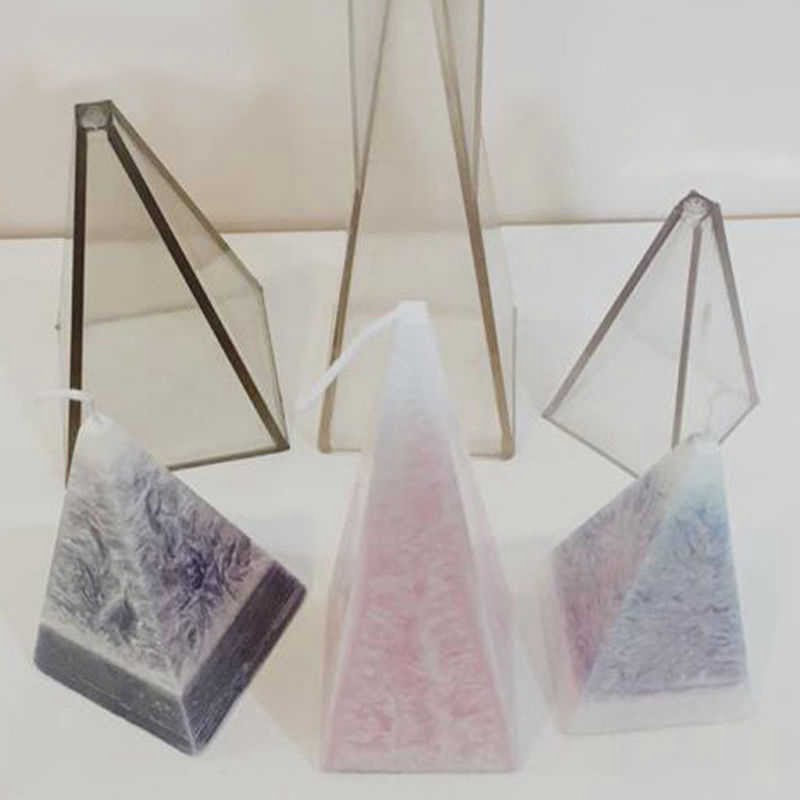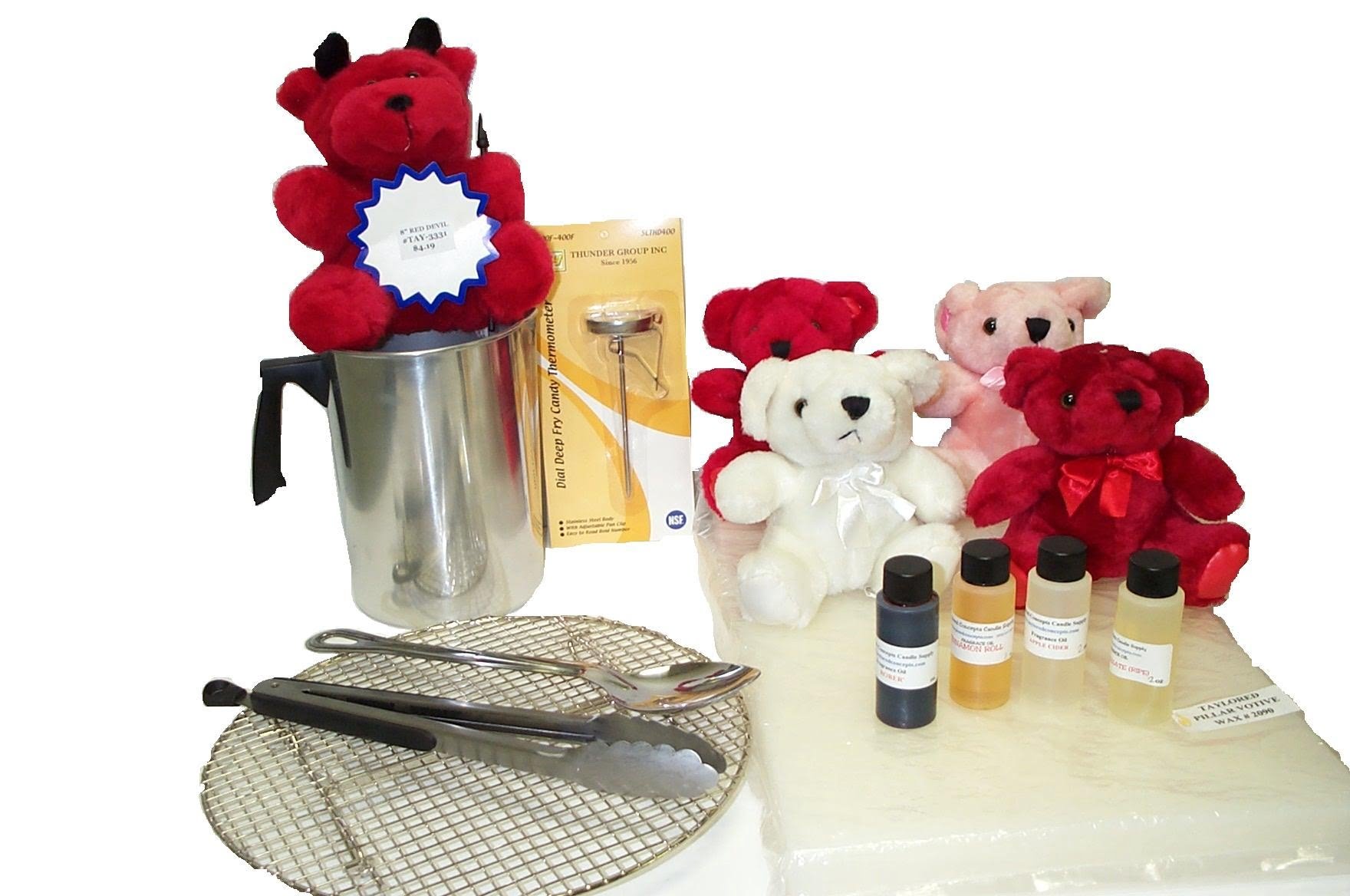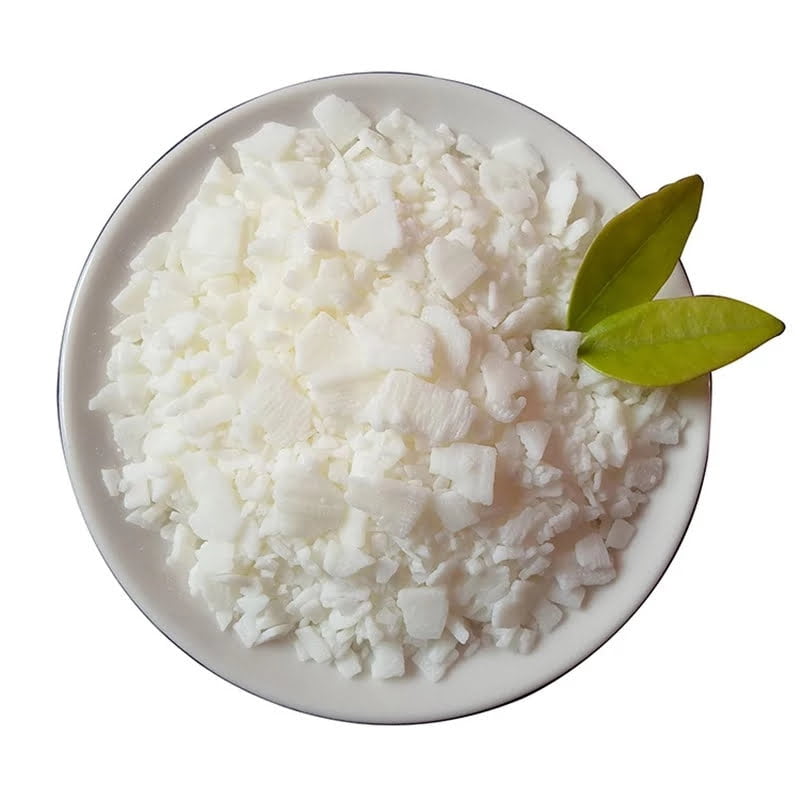Candle Making Mould Design is crucial in the process of creating beautiful and unique candles. The design of the mould greatly influences the final aesthetic appeal of the candle, as well as its burn time and overall quality. In this article, we will delve into the significance of candle making mould design and explore various aspects related to it.
When it comes to candle making, the choice of mould design plays a significant role in achieving the desired shape and appearance. Different types of moulds have their own advantages and limitations, which can greatly impact the final outcome of your candles. Understanding these basics is essential in order to make informed decisions regarding the selection of moulds for your projects.
Additionally, choosing the right candle making mould design involves considering various factors such as material, size, shape, and compatibility with different types of wax. These considerations can greatly affect not only the appearance but also the functionality and safety aspects of your candles. Therefore, it is crucial to carefully evaluate these factors before diving into your candle making journey.
In this article, we will also discuss DIY (do-it-yourself) versus ready-made candle making moulds, highlighting their pros and cons. This comparison aims to provide you with insights into which option might be more suitable for your specific needs. Furthermore, we will explore how innovative designs can enhance the aesthetics of your candles and offer tips and tricks to achieve professional results in your mould designs.
With all these aspects covered in-depth throughout this article, you will gain a comprehensive understanding of why candle making mould design is important. So let’s embark on this journey together and discover how you can embrace the artistry behind candle making mould design.
Understanding the Basics
When it comes to candle making, choosing the right mould design is crucial in achieving the desired outcome. There are several different types of candle making moulds available, each with its own unique characteristics and suitability for various projects. Understanding these basics will help you make informed decisions and create candles that meet your expectations.
One of the most commonly used types of candle making moulds is the metal mould. Made from aluminum or tin-plated steel, metal moulds are durable and can withstand high temperatures, making them suitable for both hot pour and cold pour processes. They come in various shapes and sizes, including cylindrical, square, and pillar designs. Metal moulds are known for their smooth finish, which produces professional-looking candles.
Another type of candle making mould is silicone moulds. These are popular among beginners and hobbyists due to their flexibility and ease of use. Silicone moulds are reusable and allow for intricate details in the finished candles. They come in a wide range of shapes, including novelty designs such as animals, flowers, and even food items. While silicone moulds may be more prone to tearing or warping over time compared to metal moulds, they offer greater design versatility.
Other types of candle making moulds include plastic molds and rubber molds. Plastic molds are lightweight and inexpensive but may not produce as refined results as metal or silicone molds. Rubber molds provide a flexible option for creating custom-shaped candles but require specialized techniques such as lining with plaster or using a support system during pouring.
| Type | Characteristics |
|---|---|
| Metal Moulds | Durable; heat resistant; smooth finish |
| Silicone Moulds | Flexible; reusable; intricate details |
| Plastic Moulds | Lightweight; inexpensive |
| Rubber Moulds | Flexible; custom-shaped options |
Understanding these different types of candle making moulds will help you choose the right one for your project. Consider factors such as the intricacy of your design, desired finish, and budget when making your decision. With the right mould design, you can elevate the quality and aesthetics of your candles, bringing your creative vision to life.
Factors to Consider
When it comes to candle making, choosing the right mould design is crucial in order to achieve the desired outcome. The design of the mould not only affects the shape and size of the candle, but also plays a significant role in the overall functionality. Here are some important factors to consider when choosing the right candle making mould design for your project.
Material
The material of the mould is an important factor to consider as it affects both the quality of the candle and its durability. Silicone moulds are popular due to their flexibility, ease of use, and ability to capture intricate details. They are also known for their durability and resistance to high temperatures. On the other hand, metal moulds such as aluminum or stainless steel are great for candles that require higher temperatures for melting wax or for creating pillar candles.
Size and Shape
Consider the size and shape of your desired candle when choosing a mould design. Different types of candles require different shapes and sizes; therefore, it is essential to select a mould that can accommodate your specific needs. If you prefer traditional tapered candles, a cylindrical or hexagonal mould would be suitable. For novelty-shaped candles like hearts or animals, you may need a silicone mould that offers intricate details.
Demoulding Ease
Another factor to consider is how easy it will be to remove your finished candle from the mould (demoulding). This will depend on both the material of the mould and its design features. Silicone moulds are known for their excellent demoulding properties as they offer flexibility, allowing you to easily release your finished candle without damaging its shape. Furthermore, look for additional features such as smooth interiors or removable bases that can aid in demoulding.
By taking into account these factors when choosing a candle making mould design, you can ensure that your project will yield professional-looking results while meeting your specific requirements. Whether you are a beginner or an experienced candle maker, selecting the right mould design is essential in creating candles that are both visually appealing and functional.
DIY vs. Ready-Made
Using either handmade or commercial candle making moulds has its own set of pros and cons. Each option offers unique advantages and drawbacks that should be carefully considered before deciding which type to use for your candle making project.
Pros of Handmade Moulds
- Customization: Handmade moulds allow for greater flexibility in design and shape. They can be personalized to create one-of-a-kind candles that truly reflect your creative vision.
- Cost-Efficiency: Making your own moulds can be more cost-effective in the long run, especially if you plan on producing a large quantity of candles. The initial investment in materials may be higher, but over time, it can save you money.
- Satisfaction in the Process: Crafting your own moulds can provide a sense of fulfillment and satisfaction knowing that you have created something from scratch. It allows you to express your creativity and bring your ideas to life.
Cons of Handmade Moulds
- Time-consuming: Making customised moulds requires time and effort. It involves designing, testing, and refining the mould until it meets your desired specifications. This process can be time-consuming, especially if you are new to mold-making techniques.
- Limited Durability: Handmade moulds may not be as durable as their commercial counterparts. Depending on the material used, they may degrade faster or become less suitable for repeated use over time.
- Inconsistent Results: Achieving consistent results with handmade moulds can sometimes be challenging. Minor variations in shape or size may affect the final appearance of the candle, requiring additional adjustments or refinements in the design process.
Pros of Commercial Moulds
- Ease of Use: Commercially available moulds offer convenience and ease of use. They are designed specifically for candle making and typically come with clear instructions, reducing the learning curve associated with mold-making techniques.
- Consistency: Commercial moulds are manufactured using precise measurements and high-quality materials, ensuring consistent results every time you use them. This consistency simplifies the candle making process and ensures a professional finish.
- Durability: Many commercial moulds are made from durable materials such as silicone or aluminum, allowing for repeated use without significant deterioration in quality. These moulds can withstand heat and pressure, making them a long-lasting investment.
Cons of Commercial Moulds
- Limited Design Options: Ready-made moulds may have limitations when it comes to design options. While there is a wide range available on the market, finding unique or complex shapes can be more challenging.
- Higher Cost: Commercial moulds can be more expensive upfront compared to handmade ones. If you only plan on making candles as a hobby or for occasional use, investing in commercial molds may not be cost-effective.
- Lack of Personalization: Using commercially produced moulds may limit your ability to fully personalize your candles. While they offer consistency, they may not allow for the same level of creative expression as handmade designs.
When deciding between DIY or ready-made candle making moulds, it’s essential to consider factors such as customization needs, budget constraints, time availability, and desired aesthetic outcomes. Both options have their own set of advantages and drawbacks that should align with your specific requirements and preferences. Ultimately, the choice will depend on what works best for you and your candle making goals.
Exploring Unique Shapes and Designs
When it comes to candle making, the design of the mould plays a crucial role in enhancing the overall aesthetics of the final product. The shape and design of the mould determine the shape, size, and texture of the candle, making it a vital aspect of candle making. In this section, we will explore how different designs and shapes of candle making moulds can elevate the visual appeal of candles.
Enhancing Candles with Intricate Patterns
One way candle making mould design can enhance candle aesthetics is by incorporating intricate patterns into the mould. Some molds feature detailed designs such as flowers, swirls, or geometric shapes on their surfaces. These patterns create stunning visual effects when combined with melted wax.
When the wax cools and solidifies inside these moulds, it picks up every detail, resulting in a beautifully patterned candle. These unique designs can add a touch of sophistication to your candles and make them stand out from standard plain ones.
Creating Innovative Shapes
Candle making mould design also allows for creating innovative shapes that go beyond traditional cylindrical or pillar candles. With a wide range of mould options available in different shapes – such as hearts, stars, animals, or even miniature sculptures – you can unleash your creativity and produce one-of-a-kind candles that reflect your personality or commemorate special occasions. The shape itself can become a focal point and conversation starter when displayed in homes or used as decorative pieces.
Playing with Texture
Another way that mould design enhances candle aesthetics is by introducing texture to the surface of candles. Some molds are specifically designed to have textured interiors which give unique finishes to candles once they are removed from their molds.
Whether it’s a rough, natural stone-like texture or smooth waves reminiscent of sea foam, these textures add depth and visual interest to the candles. They can also enhance the tactile experience when holding or touching the finished candle, making it more enjoyable for both decorative and functional purposes.
In summary, candle making mould design is integral to enhancing candle aesthetics. Intricate patterns, innovative shapes, and textured surfaces offer endless possibilities for creating unique and visually appealing candles. By selecting moulds that align with your artistic vision and personal style, you can create candles that not only illuminate but also captivate with their beauty.
Tips and Tricks for Successful Mould Design
Successful mould design is crucial for achieving professional and high-quality results in candle making. Whether you are a beginner or an experienced candle maker, there are tips and tricks that can help you avoid common pitfalls and enhance your mould design skills.
1. Choose the right materials: The type of material you use for your mould can significantly impact the final outcome of your candles. Silicone moulds are popular choices due to their flexibility and ease of use. They allow for easy release of the finished candles without damaging their shape or texture. However, if you prefer a more traditional approach, metal or plastic moulds can also be suitable options depending on the design and style you want to achieve.
2. Prepare the mould properly: Before pouring the melted wax into the mould, it’s essential to prepare it correctly to ensure successful results. Clean the mould thoroughly to remove any dust or debris that could affect the appearance of your candle. Apply a release agent such as mold release spray or vegetable oil to make sure the candle easily slides out of the mould once it has hardened.
3. Temperature control is key: Maintaining proper temperature control during the pouring process is crucial for achieving professional-looking candles. If your wax is too hot, it may cause bubbles or uneven cooling, resulting in a poor finish.
On the other hand, if your wax is too cool, it may not fill out the mould completely, leading to an incomplete shape or rough texture. Using a thermometer and experimenting with different temperatures will help you find the optimal range for your specific wax and mould combination.
4. Experiment with additives: Adding various additives to your wax can give your candles unique characteristics and enhance their overall quality. Consider incorporating additives such as colorants, fragrance oils, or even texturizing agents like microcrystalline wax for a visually appealing and aromatic experience.
By following these tips and tricks, you can avoid common pitfalls encountered in candle making mould design and improve your chances of achieving professional and visually stunning results. Remember, practice makes perfect, so don’t be afraid to experiment and explore different techniques to find what works best for your individual style and preferences.
Customization and Personalization
When it comes to candle making, one of the most exciting aspects is the ability to incorporate your own unique style and creativity into every candle you create. The design of the mould plays a crucial role in achieving this customization and personalization. By choosing the right mould design, you can ensure that your candles reflect your own individual aesthetic and style.
One way to incorporate your unique style into candle making mould design is by selecting moulds with different shapes and sizes. Traditional cylindrical or square moulds are great for classic designs, but for those looking to add a modern touch, there are a wide variety of options available.
From geometric shapes like triangles and hexagons to whimsical designs like flowers or animals, there is no limit to the creative possibilities. By choosing moulds with unique shapes, you can create candles that stand out and make a statement.
Another way to personalize your candle making process is by experimenting with different textures and patterns on the surface of the mould. Some moulds come with intricate patterns already embedded in them, while others allow for customization through techniques such as embossing or engraving.
By utilizing these techniques, you can add an extra layer of dimension and visual interest to your candles. Whether it’s a floral pattern that adds elegance or an abstract texture for a contemporary feel, the surface design of your candle making mould can truly make each candle one-of-a-kind.
Lastly, don’t forget about color. The color of your candle plays a significant role in its overall aesthetic appeal. With custom-made candle making moulds, you have complete control over what colors to use.
You can experiment with vibrant hues for a pop of color or go for a more monochromatic palette for a minimalist look. By considering how different colors interact when melted wax fills the mould, you can create stunning color combinations that enhance your unique style even further.
Overall, the customization and personalization of candle making mould design allow you to truly express yourself through your craft. By selecting moulds with unique shapes, experimenting with textures and patterns, and choosing the perfect colors, you can create candles that reflect your own personality and style. So let your creativity soar and embrace the limitless possibilities of customizing your candle making moulds.
Troubleshooting and Problem-solving
Candle making can be a rewarding and creative hobby, but like any craft, it is not without its challenges. In this section, we will address some common issues that candle makers may encounter when working with moulds and provide solutions to help troubleshoot these problems.
One common problem that can arise when using candle making moulds is the formation of air bubbles on the surface of the candle. This can create an uneven texture and affect the overall appearance of the finished product.
To prevent this issue, it is important to ensure that there are no air pockets in the melted wax before pouring it into the mould. This can be achieved by gently tapping the mould or using a heat gun to release any trapped air bubbles.
Another issue that candle makers may face is difficulty in removing the finished candle from the mould. This can be particularly problematic if using a rigid mould material such as metal or glass. To make demoulding easier, it is recommended to use a release agent such as silicone spray or vegetable oil before pouring in the wax. Additionally, allowing the candle to fully cool and harden before attempting to remove it from the mould can also help prevent breakage.
| Issue | Solution |
|---|---|
| Air bubbles on surface of candle | – Tap mould gently to release air – Use a heat gun to remove bubbles. – Ensure no air pockets in melted wax before pouring |
| Difficulty in removing candle from mould | – Use a release agent before pouring – Allow sufficient cooling time before demoulding |
Lastly, an issue that may occur during candle making is leakage from the bottom of the mould. This can lead to wax spilling out and potentially causing a mess. To prevent leakage, it is important to properly seal the mould before pouring in the wax. This can be done by using a high-quality mould sealer or applying a layer of melted wax around the edges of the mould.
By addressing these common problems and implementing the suggested solutions, candle makers can troubleshoot issues that may arise with their moulds and achieve professional results in their candle making projects. It is important to remember that experimentation and practice are key in perfecting one’s craft, and being aware of potential issues will help candle makers overcome any obstacles they may encounter during the moulding process.
The Future of Candle Making Mould Design
The world of candle making is continuously evolving, and so is the design of candle making moulds. As technology advances and consumer demands change, candle makers are incorporating new trends and innovations into their mould designs. This section will explore the future of candle making mould design, highlighting the latest trends and innovations in the industry.
One major trend that is gaining popularity in the candle making industry is eco-friendly mould designs. With a growing focus on sustainability and environmental consciousness, candle makers are seeking out innovative materials for their moulds that are biodegradable and renewable.
For example, some companies use plant-based resins or recycled materials to create moulds that have a lower impact on the environment. In addition to being environmentally friendly, these new mould designs also offer unique textures and finishes that add visual interest to the candles.
Another emerging trend in candle making mould design is the incorporation of technology. As smart homes become more prevalent, there is an increased demand for candles that can be controlled remotely or integrated with other smart devices.
Candle makers are experimenting with embedded sensors and Wi-Fi connectivity within their mould designs to create candles that can be controlled through smartphone apps or voice commands. Additionally, LED lighting systems are being incorporated into mould designs to create candles that can change colors or simulate flickering flames.
In terms of aesthetics, geometric shapes are becoming increasingly popular in candle making mold design. Candles with clean lines and symmetrical patterns offer a modern and minimalist look that appeals to many consumers.
The use of 3D printing technology has made it easier for candle makers to produce intricate geometric molds with precise details. Furthermore, mold designs inspired by nature such as floral motifs or organic textures continue to be highly sought after as they bring a sense of tranquility and beauty into any space.
As we move forward, it’s clear that the future of candle making mold design lies in sustainability, technology integration, and unique aesthetics. Candle makers must stay ahead of trends and constantly innovate to meet the ever-changing demands of consumers.
By embracing these trends and incorporating them into their mold designs, candle makers can create candles that not only fill a room with fragrance but also serve as beautiful works of art. The possibilities are endless, and the future is bright for those who dare to push the boundaries of candle making mold design.
Conclusion
In conclusion, candle making mould design plays a crucial role in the artistry and aesthetics of candle making. Throughout this article, we have explored the importance of understanding the basics of different types of moulds and factors to consider when choosing the right design for your project.
Whether you opt for DIY handmade moulds or ready-made commercial ones, it is important to weigh the pros and cons to achieve professional results. Additionally, exploring unique shapes and designs can enhance the visual appeal of your candles, making them stand out among others.
To ensure successful mould design, it is essential to avoid common pitfalls and utilize tips and tricks offered in this article. By incorporating your unique style into candle making mould design, you can create personalized candles that reflect your creativity and personality.
In this ever-evolving industry, troubleshooting and problem-solving are also important aspects of working with candle making moulds. By staying knowledgeable about current trends and innovations in the field of mould design, you can stay ahead of the curve and continue to produce candles that captivate consumers.
Ultimately, embracing the artistry of candle making mould design allows you to create candles that are not only functional but also visually appealing pieces of art. So go ahead and experiment with different mould designs, express your creativity, and enjoy the process of creating beautiful candles that bring warmth and light into people’s lives.

Welcome to my candle making blog! In this blog, I will be sharing my tips and tricks for making candles. I will also be sharing some of my favorite recipes.





